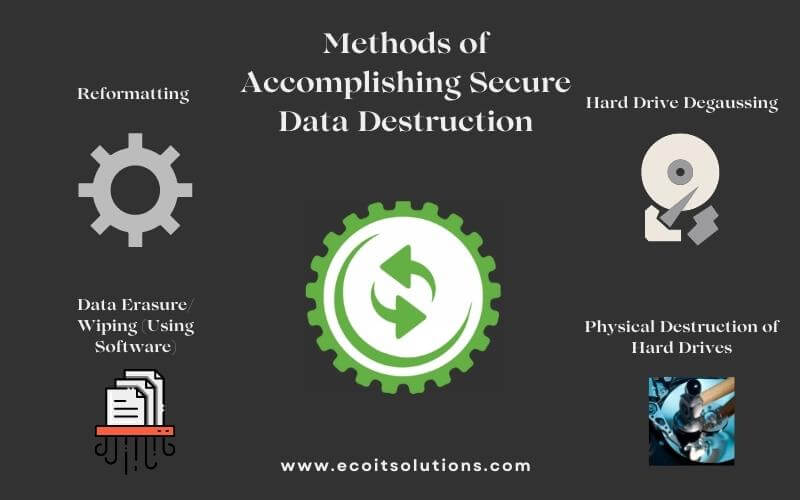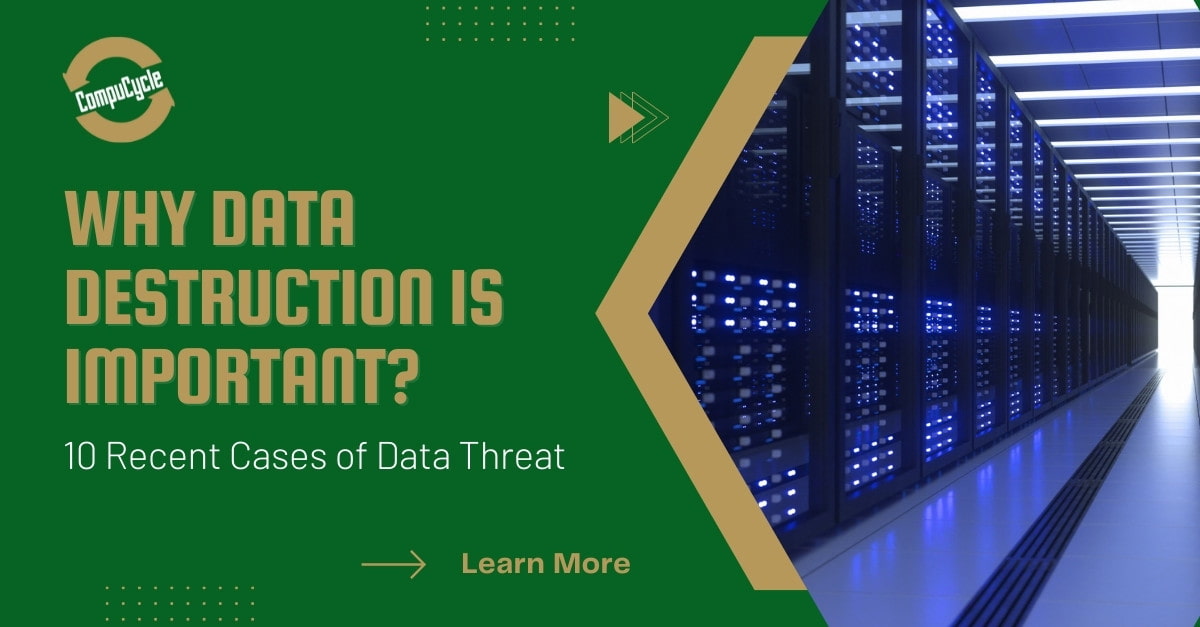Exploring the Value of Data Damage in the Context of Computer System Safety And Security Providers and Protecting Confidential Data
In an era where data breaches are significantly usual, the significance of efficient information damage can not be overemphasized. What strategies can companies carry out to boost their data damage procedures?
Understanding Information Damage
Data devastation is a crucial component of computer system safety that entails the permanent elimination of information from storage devices to avoid unauthorized gain access to and possible information breaches. In an increasingly electronic landscape, companies face increased threats related to delicate info being improperly accessed or manipulated. Efficient data destruction safeguards against these threats, making sure that personal dataâEUR" such as consumer information, copyright, and financial recordsâEUR" can not be recovered after disposal.
Understanding the value of data damage prolongs past mere compliance with legal and governing frameworks; it is essential for preserving organizational stability and count on. When data is poorly managed or inadequately ruined, the effects can be extreme, including economic loss, reputational damages, and legal obligations.

Approaches of Information Elimination

One widespread technique is information cleaning, which involves overwriting existing information with random patterns numerous times. This technique makes the original information irretrievable, making it a prominent choice for companies looking for to safeguard private info.
An additional approach is degaussing, which makes use of an effective magnetic area to interrupt the magnetic domains on storage gadgets, successfully eliminating the information. This method is particularly effective for magnetic media yet is not applicable to solid-state drives.
Physical destruction is one more robust approach, squashing or involving the shredding of storage space gadgets. This technique assurances that information healing is practically difficult, making it optimal for very sensitive details.
Lastly, encryption can work as a complementary strategy to information elimination. By securing information before deletion, organizations can add an additional layer of security, ensuring that even if remnants are recovered, they continue to be hard to reach without the decryption secret. Each technique should be picked based on the level of data sensitivity and the specific safety and security needs of the organization.
Legal Conformity and Information Safety
Organizations must navigate an intricate landscape of legal demands connected to data protection, particularly after applying techniques of information removal. Numerous guidelines, such as the General Data Security Guideline (GDPR) and the Health Insurance Policy Transportability and Responsibility Act (HIPAA), enforce stringent guidelines on exactly how companies must manage and get rid of of sensitive data. Failure to follow these laws can lead to significant legal repercussions, including considerable penalties Read Full Report and reputational damages.
Information devastation procedures have to be meticulously documented to demonstrate compliance with suitable legislations and requirements. This documents not just works as proof of adherence to lawful commitments yet additionally highlights a dedication to safeguarding delicate details. Organizations needs to additionally develop clear plans regarding information retention and devastation timelines, making certain that information is not held longer than needed.

Additionally, normal audits and evaluations of data devastation methods are important to preserve conformity and adapt to developing legal structures (data destruction). By proactively dealing with lawful requirements, companies can reduce threats connected with information violations and demonstrate their commitment to data protection. Eventually, focusing on legal compliance in data damage processes is not simply a regulative responsibility, yet a basic element of a durable information safety technique
Influence On Business Track Record
The credibility of an organization can be considerably influenced by its approach to data destruction and administration. In today's electronic landscape, where data violations can occur anytime, the failure to effectively take care of delicate information can result in serious consequences. Organizations that inadequately manage data destruction danger exposing confidential customer information, which not only breaks privacy laws but additionally deteriorates count on among clients and stakeholders.
A ruined credibility can result in reduced client loyalty, as customers end up being hesitant to engage with a business that has shown oversight in shielding their information. Unfavorable publicity surrounding an information breach can have an enduring result, as possible customers may be discouraged by the perceived absence of safety and blog security. This can bring about a direct decrease in income and market share.
In addition, businesses that focus on data damage as component of their safety and security approach can boost their track record by showcasing their dedication to guarding sensitive info. By adopting strict information management methods, companies can not only alleviate threats however likewise place themselves as trustworthy entities in their particular markets, therefore strengthening their general brand photo.

Ideal Practices for Secure Disposal
Applying finest practices for safe and secure disposal of information is important for mitigating risks related to information violations and guaranteeing conformity with personal privacy laws. Organizations must adopt a thorough information disposal policy that lays out treatments for both digital and physical information damage.
For physical information storage tools, such as hard disk drives, shredding or degaussing is suggested to avoid data healing. Additionally, companies should keep a chain of safekeeping documentation throughout the disposal procedure, making sure responsibility and traceability of disposed items.
For digital information, making use of software that follows industry requirements for information wiping is crucial. This software application needs to overwrite existing data several times, making recuperation virtually difficult. It is also essential to verify the effectiveness of the data damage procedure through audits or third-party analyses.
Educating employees on safe and secure disposal practices adds one more layer of safety and security, as human mistake look at this now can frequently cause data exposure. Regularly assessing and upgrading disposal policies guarantees positioning with progressing laws and technological innovations. By implementing these best practices, organizations can considerably minimize the danger of unapproved information accessibility and boost their total information defense strategy.
Verdict
To conclude, data destruction is a fundamental facet of computer system protection solutions that guarantees the security of private info from unauthorized gain access to. Carrying out efficient methods of data elimination, adhering to legal conformity, and identifying the influence on organization online reputation are vital components of an extensive data protection approach. By adopting ideal practices for secure disposal, companies can promote trust with customers and guard sensitive data, inevitably adding to a more safe and secure digital landscape.
In an era where information breaches are significantly typical, the value of efficient data devastation can not be overstated.Data damage is an important component of computer system safety and security that involves the irreversible elimination of data from storage space tools to avoid unapproved access and prospective information breaches. Organizations must additionally establish clear plans regarding data retention and damage timelines, making certain that data is not held longer than essential.
By proactively addressing legal demands, organizations can alleviate dangers associated with data breaches and demonstrate their commitment to information safety (data destruction). Inevitably, prioritizing legal compliance in data destruction processes is not just a regulative responsibility, yet a fundamental aspect of a robust data safety and security method